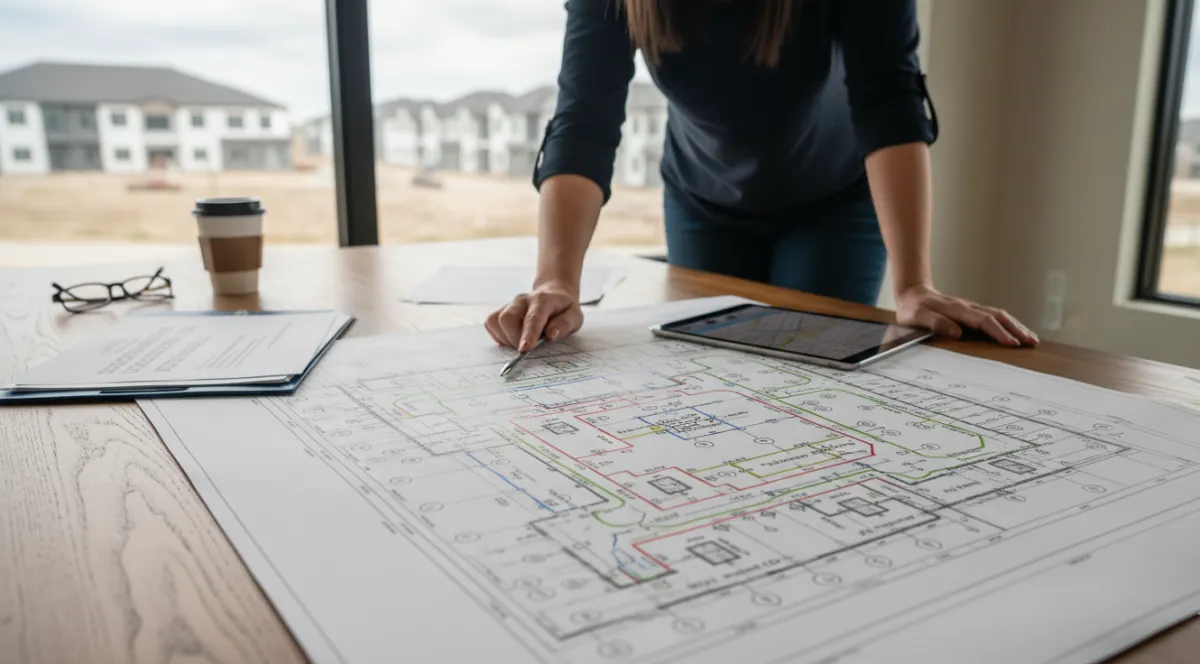
What Developers Must Know About Utilities & Entitlements: Step-by-Step Guide - Kristi Kandel
What Developers Must Know About Utilities and Entitlements: Step-by-Step Guide with Kristi Kandel
Introduction: Why This Conversation Matters
If you’re an affordable housing developer, you already know timelines and budgets can make or break a project. One of the most overlooked areas in development is the utility and entitlement process. In this episode of the Affordable Housing & Real Estate Investing Podcast, Kent Fai He sits down with Kristi Kandel, a developer with nearly 20 years of experience and founder of Local Real Estate Developer. Kristi specializes in entitlements and dry utilities, and she reveals the exact steps to avoid costly mistakes that can delay projects by 12–18 months.
For affordable housing investors, developers, and advocates, this conversation is a masterclass in risk management and smart planning.
What are the key steps in the entitlement process for developers?
Kristi breaks down entitlements as the paper stage where developers gain approval from the city to move forward with their intended land use. It’s not about breaking ground yet, but about securing zoning approvals. This stage dramatically increases the value of land and reduces risk for investors and lenders.
High-level entitlement steps include:
Submitting your site plan and load sheet prepared with your architect and MEP engineer.
Coordinating with the utility department to evaluate and design connections.
Iterating designs based on city and utility feedback.
Securing a final utility contract and including it in the GC bid package.
What are dry utilities and why do they matter in affordable housing projects?
Dry utilities include power, gas, and telecom. Many developers mistakenly assume existing infrastructure will work for new projects. In reality, older buildings often require upgraded capacity. For example, most large-scale developments require pad-mounted transformers—8x10-foot installations that take up valuable space and must be planned for early.
Failing to account for dry utilities early can create multimillion-dollar delays, especially if projects discover utility shortages after construction is complete.
When should developers start planning for utility access?
According to Kristi, planning should begin during due diligence—long before permits are pulled. Developers should secure “will serve” letters from utility providers to confirm basic service availability.
The formal utility design process should begin as soon as the first entitlement package is submitted, because the timeline for utility design can run 9–15 months. Starting early can save a year or more on project delivery.
What are the biggest mistakes developers make with utilities?
Kristi highlights three recurring errors that cost developers time and money:
Not planning transformer placement early – leading to costly redesigns.
Not hiring an MEP engineer during entitlements – leaving utility loads undefined until it’s too late.
Assuming consultants cover everything – civil engineers typically only handle wet utilities (water/sewer), not dry utilities. This siloed thinking leads to scope gaps and costly field conflicts.
How do utilities impact affordable housing projects differently?
While the utility steps are mostly the same for affordable and market-rate projects, affordable housing sometimes benefits from political prioritization. Kristi shared an example from Los Angeles where the mayor’s directive allowed an affordable housing project to secure a utility design in just 60 days—compared to the usual 18 months. This advantage can save millions in carrying costs and accelerate delivery of much-needed housing.
Key Insights & Frameworks
Start utility planning during due diligence, not after entitlements.
Always secure will serve letters early to confirm service availability.
Hire an MEP engineer upfront to define accurate utility loads.
Avoid silos: coordinate civil, architect, and utility providers from day one.
For affordable housing, leverage political support to accelerate timelines.
Best Quotes from Kristi Kandel
“The biggest mistake I see most people making is when they work their development in silos.”
“Utilities are super easy to shift on paper. Once you’re in the field, moving them two feet can cost you millions.”
“Sometimes not planning for utilities can delay projects 18 months. There’s no way to expedite it, and the carrying costs are brutal.”
“If you can flip a house, you can repurpose a commercial building in your neighborhood. Anyone can become a local developer.”
Common Questions About Utilities and Entitlements
What are entitlements in real estate development?
Entitlements are city approvals that confirm you can build your intended project on a specific property. It increases the land’s value but doesn’t yet mean you can start construction.
What are dry utilities?
Dry utilities refer to power, gas, and telecom (internet/phone). They are critical infrastructure for any housing project and must be designed in coordination with city and utility providers.
How long does it take to get utilities approved?
On average, utility design takes 9–15 months. Starting the process during entitlements is critical to avoid delays.
Why do affordable housing projects sometimes move faster?
Cities often prioritize affordable housing projects politically, which can accelerate approvals and utility timelines, saving millions in costs.
What is a “will serve” letter?
A letter from utility providers confirming they can serve a site. It does not guarantee capacity but identifies the provider and initial feasibility.

Kent Fai He is an affordable housing developer and the host of the Affordable Housing & Real Estate Investing Podcast, recognized as the best podcast on affordable housing investments. Each episode brings practical, real-world knowledge from experts like Kristi Kandel to ensure developers, investors, and advocates are equipped to succeed.
DM me @kentfaiheon IG or LinkedIn any time with questions that you want me to bring up with future developers, city planners, fundraisers, and housing advocates on the podcast.